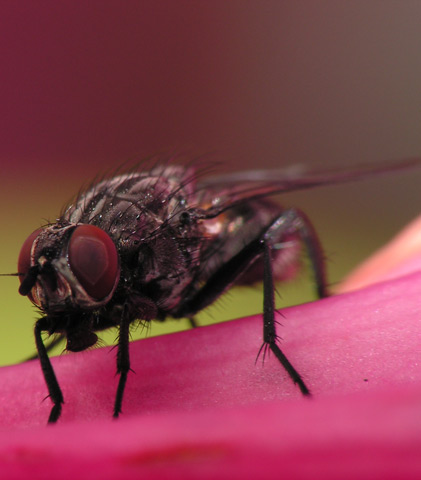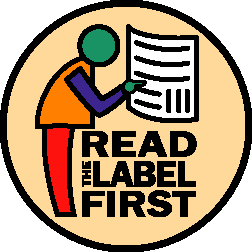
How do I know which insecticide to use?
We understand that finding insects in your home can be unsettling or even frightening. But insecticides are powerful chemical mixtures and must always be used correctly, so please take some time to determine which to use. The best insecticide for a particular situation will depend on which insects you wish to kill and where they are. Read the product label carefully to make sure it is appropriate to use in your situation, and follow all label directions and cautions.
Here are links to our most popular insecticides to help you choose:
- Champion Sprayon® Multi-Purpose Insect & Lice Killer (kills bedbugs, fleas, ticks, lice)
- Champion Sprayon® FS+ Multi-Purpose Insecticide (good for food-service areas)
- Champion Sprayon® Ant & Roach Killer (2-week residual for ants, cockroaches, fleas)
- Champion Sprayon® Flying Insect Killer (kills flies, mosquitoes and many other pests)
- Champion Sprayon® Wasp, Bee & Hornet Killer (reaches nests up to 20 feet above ground)
Why is it so important to read the labels on insecticide products?
When used correctly, insecticides can make life safer and more pleasant. But if they are used incorrectly, they can harm people, pets and the planet.
Read more about why you should always Read the Label First.
How do I know what kind of insect I’m trying to kill?
There are several good insect identification web sites that can help. Here’s one: http://www.insectidentification.org/
I have children and/or pets. Can I still use insecticides in my home and yard?
While all insecticide label directions and cautions should always be followed, extra caution may be needed in households with children and/or pets. For instance:
- Sprays must be dry and rooms must be clear of fumes before allowing children or pets into treated areas.
- Children’s or pets’ toys should be removed from the area before spraying. If toys are accidentally sprayed, they must be cleaned with hot soapy water and thoroughly rinsed before allowing children or pets to play with them.
- Do not use home and garden insecticides directly on your pets unless this usage is specifically mentioned on the can label and you follow the directions carefully. For instance, our Champion Sprayon® Multi-Purpose Insect and Lice Killer may be applied to dogs, but is toxic to puppies under 12 weeks old and to cats.
What can you tell me about bed bugs?
According to the Centers for Disease Control (CDC) web site, bed bugs (Cimex lectularius) are small, flat, parasitic insects that feed solely on the blood of people and animals while they sleep. Bed bugs are reddish-brown in color, wingless, range from 1mm to 7mm (roughly the size of Lincoln’s head on a penny), and can live several months without a blood meal.
Bed bug infestations usually occur around or near the areas where people sleep. These areas include apartments, shelters, rooming houses, hotels, cruise ships, buses, trains, and dorm rooms. They hide during the day in places such as seams of mattresses, box springs, bed frames, headboards, dresser tables, inside cracks or crevices, behind wallpaper, or any other clutter or objects around a bed. Bed bugs have been shown to be able to travel over 100 feet in a night but tend to live within 8 feet of where people sleep.
While bed bugs do not spread disease, they can be an annoyance because their presence may cause itching and loss of sleep. Sometimes the itching can lead to excessive scratching that can sometimes increase the chance of a secondary skin infection. Bite responses can range from an absence of any physical signs of the bite, to a small bite mark, to a serious allergic reaction. Bed bugs are not considered to be dangerous; however, an allergic reaction to several bites may need medical attention.
For more information, visit http://www.cdc.gov/parasites/bedbugs/faqs.html
Does Chase have an insecticide that can control bed bugs?
Yes, our Champion Sprayon® Multi-Purpose Insect & Lice Killer kills bed bugs and their eggs when used as directed.
Champion Sprayon® Multi-Purpose Insect & Lice Killer
How can I get rid of bed bugs?
Getting rid of bedbugs begins with cleaning up the places where bedbugs live. This should include the following:
- Clean bedding, linens, curtains, and clothing in hot water and dry them on the highest dryer setting. Place stuffed animals, shoes, and other items that can't be washed in the dryer and run on high for 30 minutes.
- Use a stiff brush to scrub mattress seams to remove bedbugs and their eggs before vacuuming.
- Vacuum your bed and surrounding area frequently. After vacuuming, immediately place the vacuum cleaner bag in a plastic bag and place in garbage can outdoors.
- Encase mattress and box springs with a tightly woven, zippered cover to keep bedbugs from entering or escaping. Bedbugs may live up to a year without feeding, so keep the cover on your mattress for at least a year to make sure all bugs in the mattress are dead.
- Repair cracks in plaster and glue down peeling wallpaper to get rid of places bedbugs can hide.
- Get rid of clutter around the bed.
If your mattress is infested, you may want to get rid of it and get a new one, but take care to rid the rest of your home of bedbugs or they will infest your new mattress.
(this info from http://www.webmd.com/skin-problems-and-treatments/guide/bedbugs-infestation?page=2)What can you tell me about stinkbugs?
There are hundreds of types of stinkbugs. The newest arrival to the US is the brown marmorated variety from Asia. They are not harmful to humans and are not known to carry diseases. Their name comes from the foul, pungent smell they give off when they sense danger.
Does Chase have an insecticide that can control stinkbugs?
Currently, none of our formulations have been tested as effective against stinkbugs.




